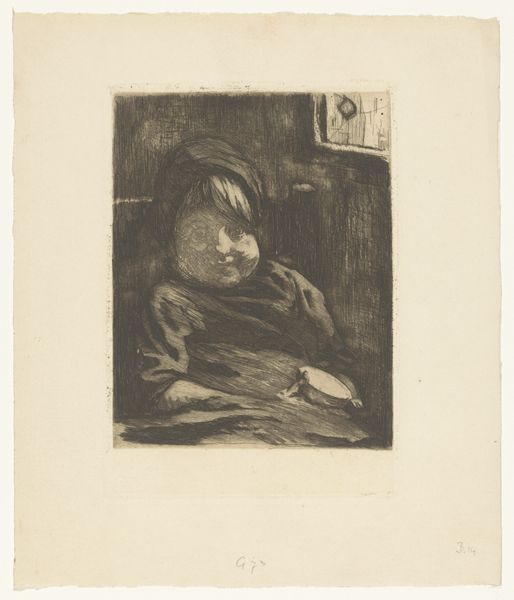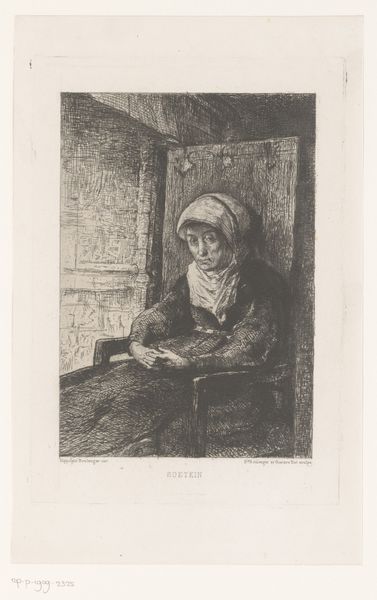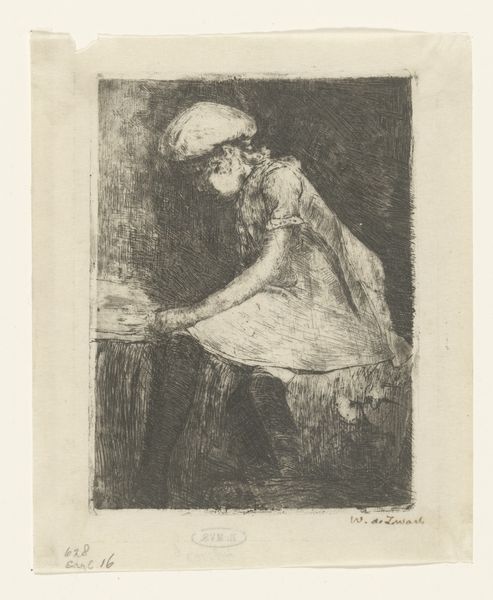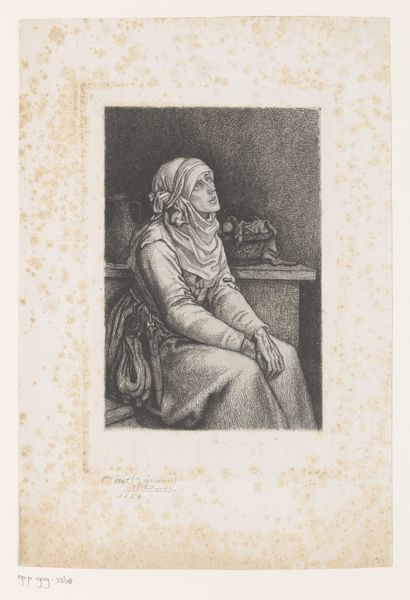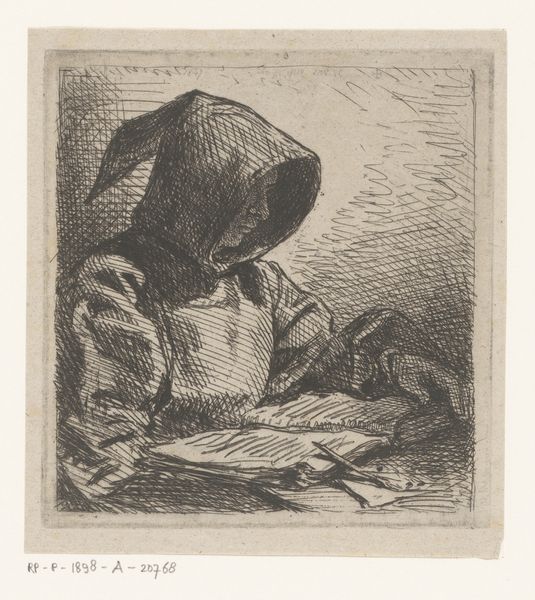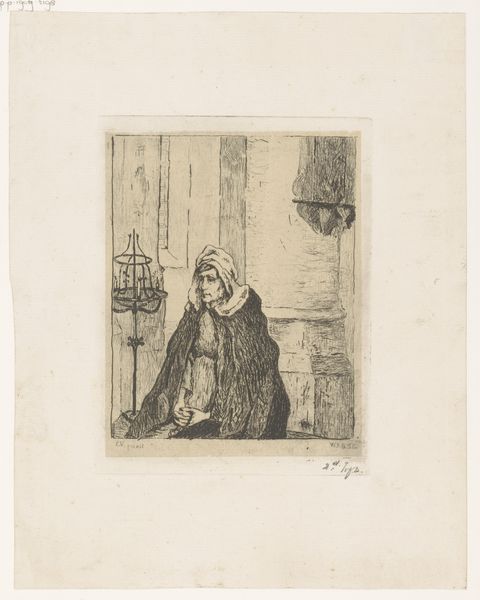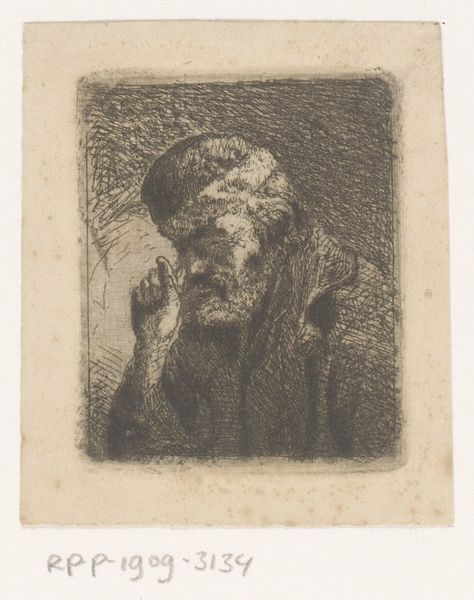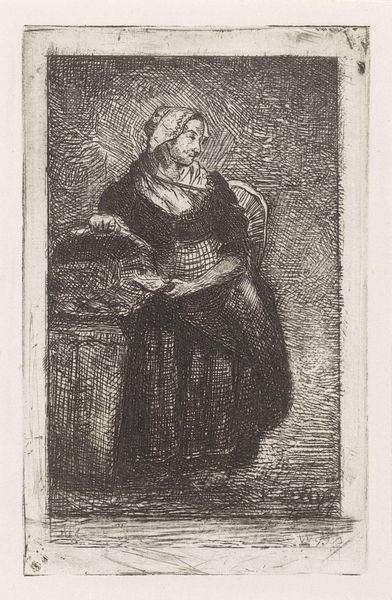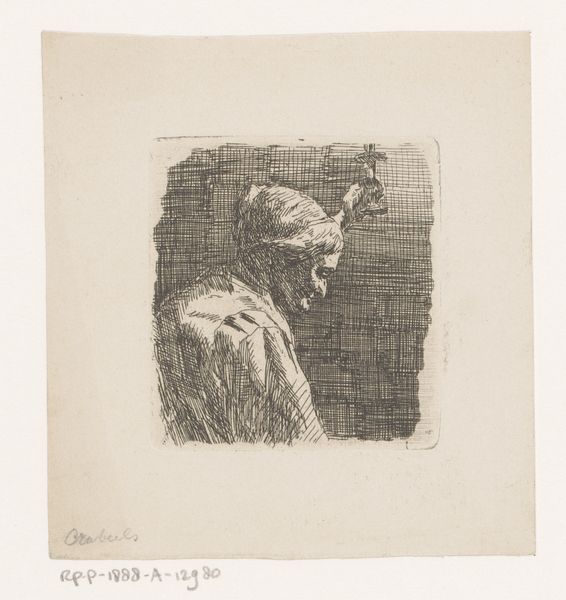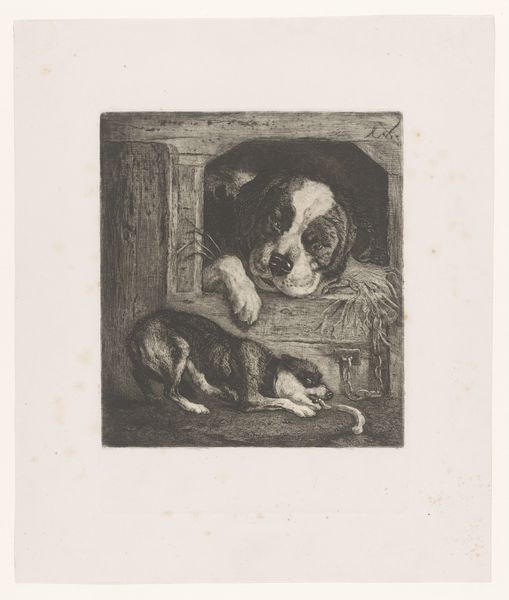
Dimensions: height 196 mm, width 177 mm
Copyright: Rijks Museum: Open Domain
Curator: Looking at this somber piece, I am struck by the incredible textures the artist achieves using only engraving. Editor: Yes, it's an absorbing work. Simon Andreas Krausz probably produced "Lezende oude vrouw," or "Reading Old Woman," sometime between 1770 and 1825. It's easy to see a reflection of societal interest in domesticity in Northern Europe reflected in its creation and circulation at the time. Curator: What’s interesting to me is that an engraving allows for a degree of reproducibility. To consider its potential for dissemination; were prints like this used for moralizing purposes or other public education initiatives at that time? The means of reproduction itself surely influenced how viewers understood the artwork, no? Editor: Undoubtedly. Prints such as this offered broader audiences engagement with art that, formerly, may only have been viewed by wealthier patrons. The availability reshaped viewership. The motif itself fits within genre painting conventions that popularized the image of everyday life as subject for artwork. Curator: Let’s focus on the making of this print for a moment. Looking closely, I can appreciate the artist's skilled labor. The meticulous lines—how many hours, days did he dedicate to pressing into that plate to depict everything from the rough-hewn wooden chair to the lines on the woman’s aged face? We often consider only the symbolic "value" of a book, but rarely its tangible worth, especially during the Baroque period. Editor: Yes, the material elements speak volumes, quite literally. Furthermore, in thinking of how art production mirrored class structure, how does the engraving process in itself emphasize certain value structures, such as those associated with Protestantism: personal learning through faith, and the importance of knowledge? Curator: I’d agree, considering how engraving techniques and printmaking democratized knowledge in that era by depicting images and sharing them widely, affecting society and cultural ideas. Editor: Yes, thinking of this art historically, it reminds us how imagery served as a social and political tool. Curator: Indeed, an artistic work created with intent to be spread using available resources, shaped perceptions during a pivotal period.
Comments
No comments
Be the first to comment and join the conversation on the ultimate creative platform.
